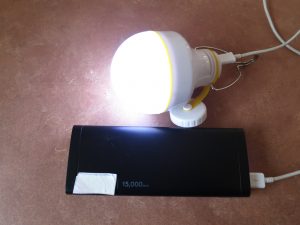If you are a very smart renter, you can maintain a decent level of comfort during a prolonged gas or electricity outage.
Here’s how the very smart renter changes mentioned in the topics under Slash your energy bills will help in a utility interruption:
- Solar based lighting will enable you to meet most of your lighting needs for a few hours a day.
- Learning how to keep warm or cool with minimal space heating means that you are most likely to maintain a comfortable body temperature during a black out due to existing knowledge, habits and being better acclimatised to the seasons.
- In winter, outdoor gear like beanies, gloves and sleeping bags can assist with maintaining warmth if the indoor temperature really plummets, as can drinking a hot milk or hot milk alternative drink regularly, say every four hours (worked well for Arctic explorer Ernest Shakleton).
- In summer, if a house gets above a safe indoor temperature, inhabitants can cool off with a cold shower, drink cold drinks (if available), lay a wet towel over bare feet (this also works well if you are struggling to sleep in hot weather) or go to a shady outdoor space with greenery or somewhere to swim and cool off.
- The portable solar hot water system described elsewhere can enable you to continue to have hot showers if there is sun available or you can use a backup stove as described below if no sun is available.

- A portable solar oven used for hot water can also cook simple meals and boil water (slowly) if sun is available.
- Clothes can be washed by hand in cold water and dried using a washing line or indoor clothes rack.
- Due to lower cold air leakage and superior insulation, a chest fridge will stay cooler for longer than an upright fridge. Having a part of your fresh food storage in refrigeration rather than all of it also means that you won’t lose all of your fresh food in a prolonged blackout.
- You’ll avoid automatic or electric devices like electric garage doors, driveway gates, blinds and curtains that do jobs that you can easily do yourself, yet can leave you unable to get a vehicle off your property or let/block out light, heat and cold when the power goes out.
From here, you’ve got a good base to work from so here’s how you can add some backup power to keep essentials running in a blackout from a few days to a few months. You may have some of these things already:
A $50 75Wh USB battery bank can provide enough power to:

- Recharge three solar lights once during prolonged cloudy weather and recharge two mobile phones twice each.
- Run a small portable evaporative cooler for 10 hours to provide cooling for two people.
- Can be charged from a solar panel to provide a cheap and portable back up system for basic lighting, communications and personal cooling for $150.
A 1.2kWh deep cycle battery can:

- Be procured for free. Batteries like these are used in backup generators in places like hospitals and despite having a lifespan of 10 years, they are usually replaced well before then.
- Such a battery can be paired with a foldable solar panel, charge controller and a 300Watt inverter for a total cost of $500 to run a laptop, router, larger lamps, a stereo, an electric blanket, a fan or two or a 12 volt fridge if you have one.
- If used regularly to displace mains power use, this setup can pay for itself in energy savings.
A small hiking stove can:
- Be made out of a beer or soft drink can and can run on methylated spirits (search for “beer can stove” online). We use one for hiking and cycling tours and a 1 litre bottle is normally enough fuel for two weeks.
- Be a small wood stove if you are patient enough and have a good stash of wood.
- Provide heat for cooking basic meals and minimalistic water heating.
An LPG BBQ/outdoor stove or wood stove can:

- Be found cheap second hand if you don’t already have one. If you want to buy something like this for backup in a blackout, a stove is much more useful.
- Provide up to two months of cooking and water heating for a portable solar shower system (yes, we have done this) off one $30, 9kg LPG bottle.
- Due to carbon monoxide risks, cooking on an outdoor stove or BBQ should only be done outside or in a well ventilated outdoor area like a garage with the main door open.
The situation may not be ideal but having prior knowledge of how to live comfortably on little home energy will enable you to maintain a reasonably comfortable household in a blackout, whereas a person who has little to no energy literacy will be very uncomfortable.